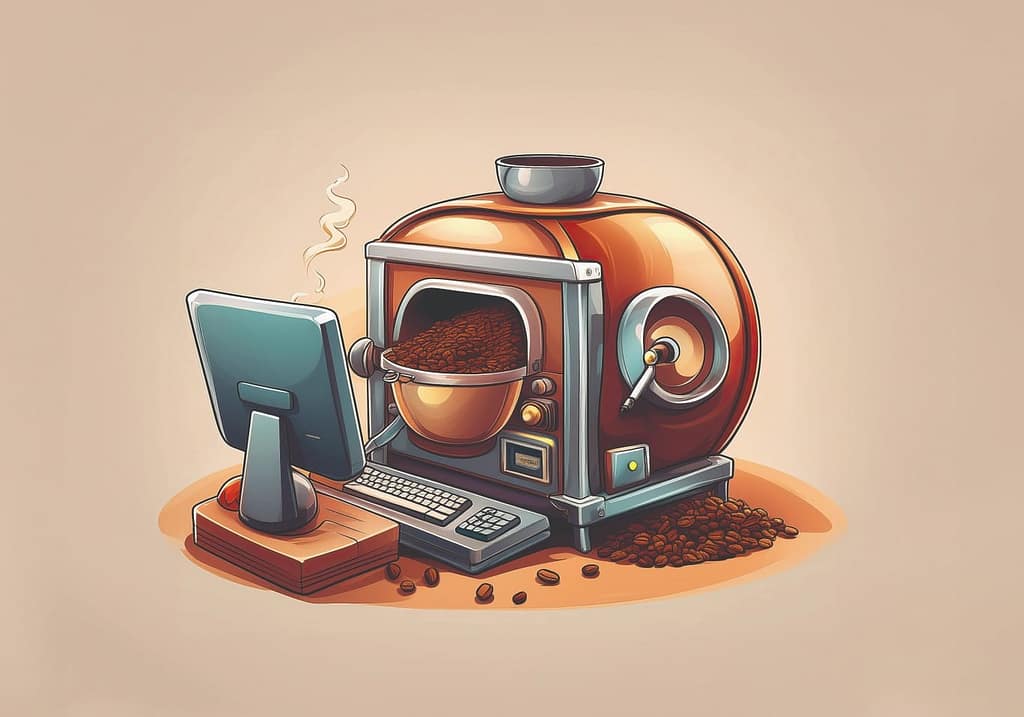[[{“value”:”Image: Adobe Firefly/stock.adobe.com
How a specialty roaster and tech entrepreneur came together to create the world’s first AI-generated coffee blend.
As artificial intelligence (AI) technology continues to get smarter and easier to access, there are plenty of mundane, repetitive, and time-consuming tasks the coffee industry will be happy to hand over to computers. But what about creative skills such as blending, typically reserved for experienced roasters; can a machine use data to recreate a process that usually takes years to refine?
It’s a question that Antti Merilehto, AI specialist, coffee fan, and Founder of Elev Consulting in Finland, sought to answer when he approached Kaffa Roastery. As a long-term customer of the Helsinki roaster, he was curious to find out if his background in AI could be blended with his passion for coffee.
“One day I was having an espresso at the roastery and wondered if AI could be used to create a new coffee blend. I work with AI machine learning, so I started to chat with the Kaffa team about my idea,” he says.
The two companies decided to join forces to see how AI could benefit the blending process. The first step was for Head Roaster Mike Akins to prepare data on the taste descriptions of Kaffa’s best-selling coffees.
“We analysed that data and started the prompt to begin working with AI to find what we call ‘the perfect blend’,” says Merilehto.
The AI technology produced a basic recipe featuring four coffees, each of which Akin and team processed using their usual roasting and cupping system.
“It gave us four coffees, but we usually start our blending process with just one coffee, and then we’ll add a second and third if needed,” says Akin.
“We always think less is better, and usually it is, but in this case we were pleasantly surprised to get a really balanced and diverse cup from the AI suggestion.”
The Kaffa team made three different prototypes with the AI-generated recipe, two of which they adapted to suit their usual roasting preferences. The third was produced exactly as instructed by the computer and was the blend they ended up selecting for production.
“It’s super good. It has acidity and sweetness, as well as the different complexities that are important to us to create a really great cup of coffee,” says Akin.
The winning blend is a mix of Brazil Fazenda Pinhal (40 per cent), Colombia San Lorenzo (25 per cent), Guatemala La Bolsa (25 per cent), and Ethiopia Geruke (10 per cent). As part of the collaborative project, the team also used AI to come up with the tasting notes, which describe the coffee as: “Juicy and dynamic. A well-balanced blend of sweetness and ripe fruit”.
“It came up with really great suggestions of how to describe the coffee, which is one of the most important tools we have when it comes to a blend’s marketing,” says Akin.
The name AI-conic Coffee was generated by “the very basic ChatGPT 3.5”, while the futuristic graphics on the packaging were also developed using AI by artist Sani Leino. Despite the project being powered by this developing technology, Merilehto is keen to stress that it was not designed to demonstrate how machines can replace roasters.
“It is not that the machine is replacing humans, but rather that human and machine interaction can work together. I think it’s a great example of how we can combine crafts to find something new,” he says.
The AI-conic Coffee blend, which is roasted at Kaffa’s Punavuori roastery, was described by Jarno Perakyla, two-time Finnish Barista Champion, as “actually good coffee”. It’s available to buy from Kaffa’s cafés and online.
For more information on AI-conic Coffee, click here.
This article was first published in the September/October 2024 edition of Global Coffee Report. Read more HERE.
The post Can a computer outperform an experienced coffee blender? appeared first on Global Coffee Report.
“}]]


